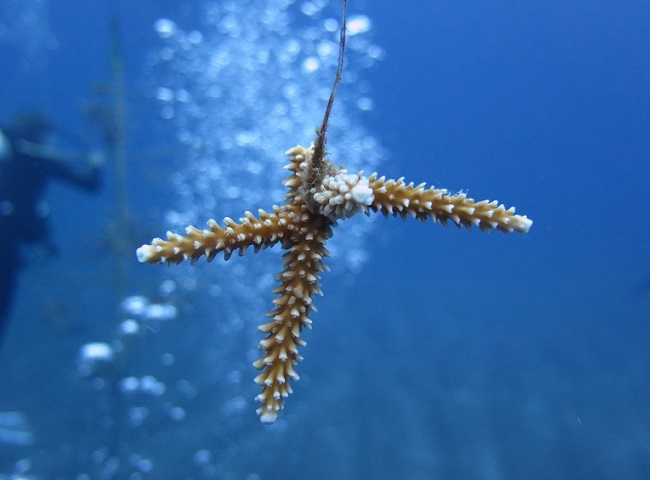SABA — The pilot has started to relocate the coral colonies from Black Rocks, the proposed location where Saba’s new harbor will be built. The pilot and the actual relocation, a meticulous process, is carried out by the Saba Conservation Foundation (SCF).
International Conventions, in particular the Specially Protected Areas and Wildlife (SPAW) Protocol, require the protection, preservation and sustainable management of threatened or endangered species. Amongst the protected species are the wild colonies of critically endangered Elkhorn coral (Acropora palmata), Staghorn coral (Acropora cervicornis) and Mountainous star coral (Montastraea faveolata) that live in the area where the harbor will be built. An exemption of the protocol must be obtained before the start of the harbor construction.
Fully aware of the importance of preserving the corals, the harbor project management discussed the presence of the colonies with SCF. In 2019, as a first step, SCF surveyed the project area. All protected corals colonies in the project area were photographed and mapped. The gathered information also served as input for the Environmental Impact Assessment by EcoVision.
The next step was the start of a pilot project to determine the best site and method for the relocation of the corals. Early 2021, a team of SCF carefully removed a few coral samples from the project location and brought these to two nurseries: the existing nursery at Ladder Bay on the west side of Saba and a new nursery at a location known as Hole in the Corner on the south side of Saba. Outside coral experts were consulted about the coral relocation trial.
The relocation has to take place in a very careful manner, because corals are a highly sensitive species. The corals are moved in crates in which the water is continuously refreshed and kept at a constant temperature. The coral colonies are moved as a whole as much as possible.
The team continuously monitors the health of the relocated coral samples in the nurseries. Initial surveys have shown that Hole in the Corner is more suitable for the corals’ relocation, because there is less sedimentation, less algae growth and it is closer to Black Rocks, with more similar natural circumstances. This means less stress for the corals. As a next step in the trial, more fragments are relocated to Hole in the Corner, but this time the fragments are placed directly on the reef, instead of a nursery. This is the ultimate test of the relocation trial.
The pilot provides valuable information, in preparation of the harbor project permitting and construction. The coral colonies will be moved as a whole as much as possible.































